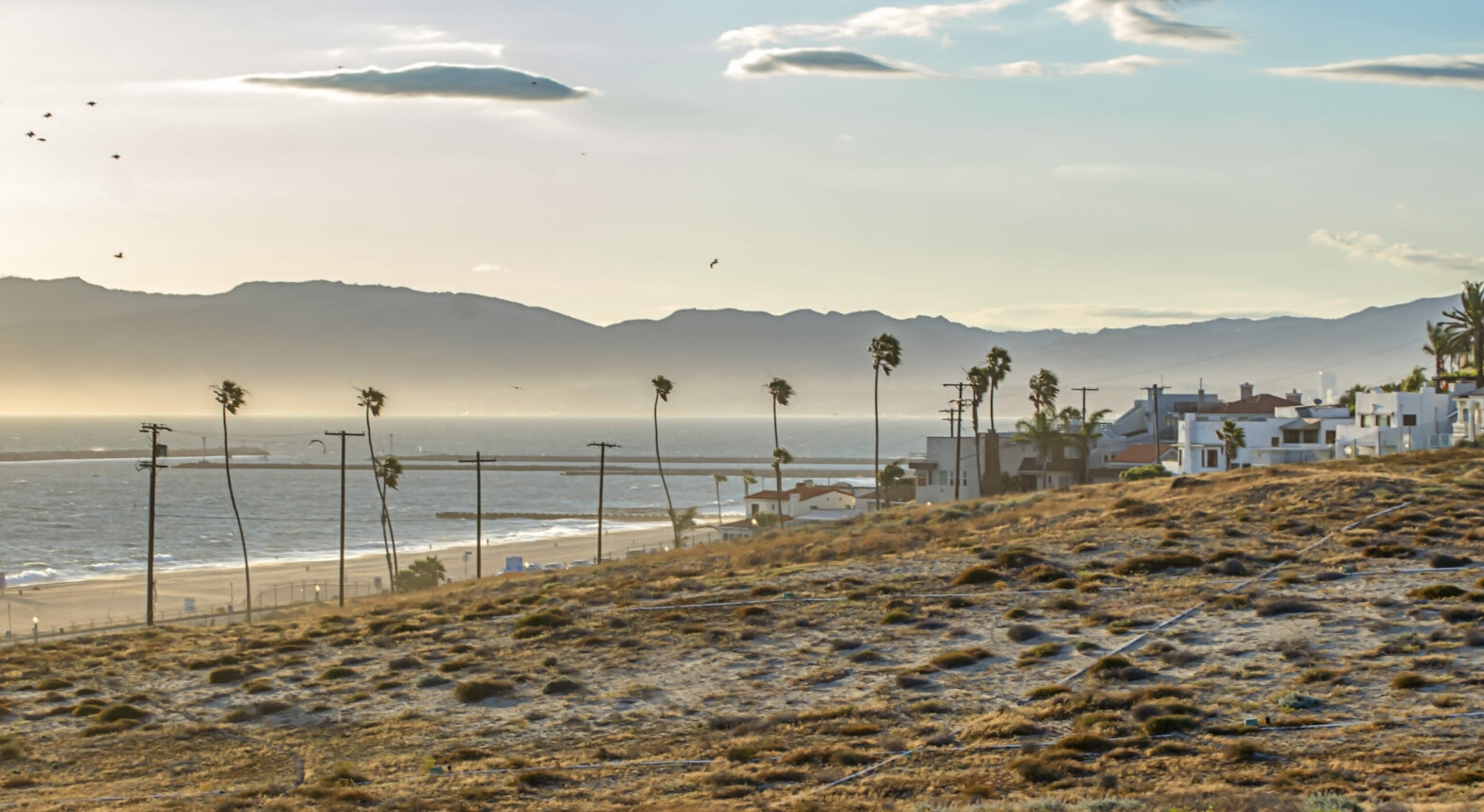Sandy shores are defined as open coast sandy beaches. These beaches extend for more than 30 miles (50 kilometers) along the shoreline of Santa Monica Bay. The beach is more than just sand as waves, wind, and plants play strong roles in the shape or profile of a beach. In the surf zone waves are moving the sand back and forth. Larger currents transport the sand in Santa Monica Bay towards the east and south. The large-scale movement of this sediment, often defined as a littoral cell, starts near Point Dume, and then ends when the sand enters the Redondo Submarine Canyon.
During the summer months, the ocean is often calmer than in the winter. In the summer sand is pushed back onto the beaches, generally causing them to widen. In the winter the larger, more frequent waves lead to erosion. The eroded sand is often deposited near the beach, outside the waves, or on sandbars. As a result, the surf zone is almost always changing, scientists use the term dynamic. The further back from the water the beach becomes more stable and less dynamic.
In these more stable environments, sand is blown by the wind and captured by plants, and beach wrack, (kelp, and plant material washed up on the beach). In natural systems this material builds up and traps more sand, the start of sand dunes. Plants adapted to the salty water they receive in these environments become the foundation of a vegetated coastal strand. A little further back from the water, a more diverse group of plants can form low foredunes and back dunes. The branches and roots of these plants can hold the sand in place and reduce erosion while providing good habitat for resident and migrating wildlife.
An estimated 70 million people visit the beaches of Santa Monica Bay annually. Current infrastructure and maintenance practices support a visitor experience. The profound human presence often diminishes the habitat, leaving little space for plants, migrating birds, and other wildlife. Contemporary approaches to coastal infrastructure and maintenance allow for greater beach integrity with benefits to people and wildlife alike.
Climate change results in sea level rise, more frequently intense storms, drought, and warmer weather. These stressors are likely to cause more profound erosion, coastal flooding, and damage to shoreline infrastructure. Angelenos have long used these beaches for recreation and as refuge from inland heat, and beach visitors are the foundation of our coastal economy. The need for Angelenos to get relief from heat is expected to increase in the coming decades, while our beaches are expected to decrease in size. Smart management will be necessary to sustain the beaches and the needs of our community.
